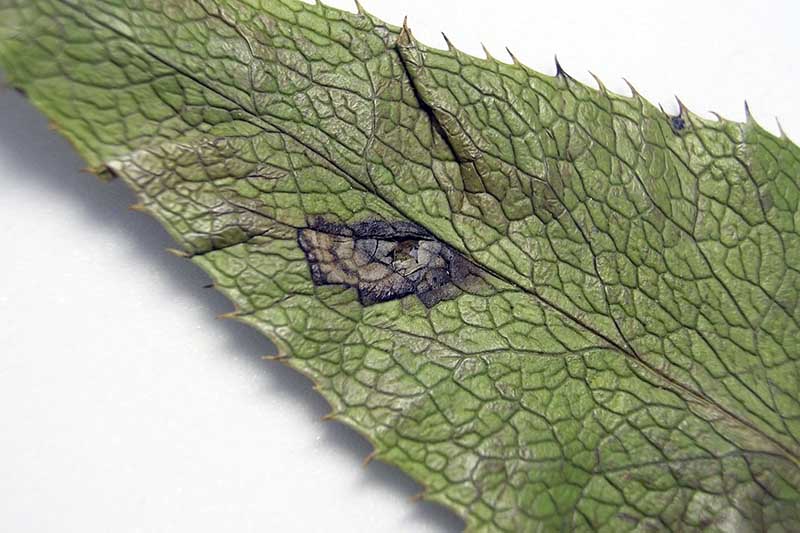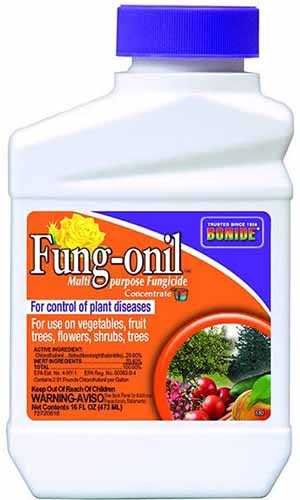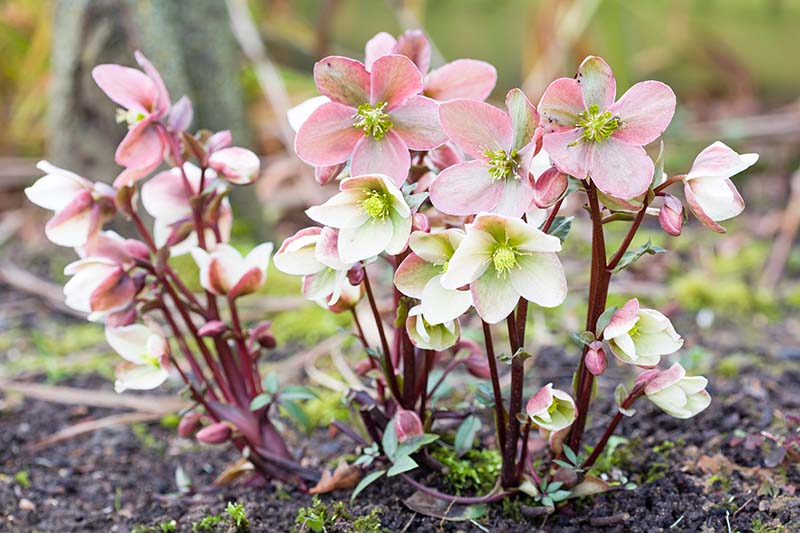In our guide to growing hellebores, we cover everything you need to know to cultivate these early-blooming beauties in your garden. There are three main problems that can affect hellebores, each caused by a different pathogen. We link to vendors to help you find relevant products. If you buy from one of our links, we may earn a commission. Here’s the lineup:
1. Black Death
Hellebores may be prone to infection by a fairly recently discovered and dreadful viral pathogen, the Helleborus net necrosis virus (HeNNV), that causes a disease known as the black death. You should be highly alarmed if you see black blotches and streaks on the surface of the leaves or flower bracts of mature plants. There is a good chance that your plants are infected with the virus that causes black death. Other signs of infection include stunted growth, brown or black leaf veins, or dark spots on the bracts and petioles. As the name “black death” suggests, there is little hope for saving your plants if they are infected. You’ll need to dig them up and dispose of them in the trash to try and contain the infection. Experts believe that this disease is spread by aphids, so you may want to treat any uninfected plants with an insecticide to keep these pests at bay. Additionally, be sure to disinfect your pruning shears and any tools that you used on and around the infected plants. The only bright side is that this disease is typically more of a problem in plant nurseries and large collections than in home gardens. You can read more about hellebore black death in our guide.
2. Black Spot
Black spot, also known as leaf spot, is a fungal infection caused by Microsphaeropsis hellebori. It’s much more common than black death, but if it’s allowed to spread, can be just as devastating. If your hellebores have black or brown spots on their leaves, they are probably infected with this fungal disease. You can distinguish black spot from black death by the pattern of the lesions. In the case of black death, they are typically streaked and blotchy in appearance, while lesions caused by black spot are rounded. As the disease spreads, it covers the leaves, and the dead portions may die off and fall out, leaving holes in the foliage. If it spreads to the stem, the plant may suddenly collapse. The fungus may also attack the base of the stems, causing them to rot before flowering. This fungus is worse in warm and wet conditions. Rain and wind can spread the spores throughout your garden, leading to complete devastation of your hellebores. H. argutifolius (Corsican hellebore) is less likely to be infected, while H. niger is highly susceptible. It is imperative to stop the spread of this disease, or the infection will continue unabated. At the first sign of infection, immediately remove any affected foliage and destroy it – do not place it on your compost pile as the fungi will continue to produce spores and spread. Also purge any leaves and other plant material on the ground, as they are likely to be contaminated. After you have cut down infected plants, make sure to sterilize your gardening tools. You can treat your shears with 70 percent alcohol or bleach. You can help prevent this infection by pruning the leaves in the autumn, and removing any damaged stems or foliage. Make a habit to clear out any debris from around the plants, as it can serve as a reservoir for infections. Another preventative step is to prune nearby plants to improve air circulation. Fungicides are an option. While none have been specifically developed to fight black spot, most fungicides will act on an array of fungal diseases. It’s available as Captan from Bonide. This product is a powder, and you’ll need to dilute it according to package instructions, and reapply every 10 to 14 days as needed. Remember to always exercise caution when using chemicals in the garden, and take the appropriate safety measures as recommended by the manufacturer.
3. Downy Mildew
A number of types of fungal plant pathogens have been known as “water molds” for their ability to spread in moisture. They have since been reclassified as oomycetes and can be controlled by some of the same chemicals used to control fungi. Downy mildew, caused by Peronospora pulveracea, affects hellebores in wet weather. This disease has very distinctive symptoms. If your plants look like they are covered in a coating of mildew, and have brown or black speckles on the leaves, they likely have this infection. The fuzzy, mold-like coating will typically cover the leaves, stems, and flowers, although sometimes the disease will manifest as yellow patches on the foliage. In the early stages, symptoms are most noticeable on the underside of the foliage. As the disease progresses, your plants may drop flowers and leaves, and without treatment, they may die. Fungicides can help to control downy mildew, but there are also cultural controls that you can implement. Always water at the base of the plants, so the leaves don’t get wet. Provide adequate space between plants, so that air will circulate, and make sure that the soil drains well. Adding a layer of mulch can help to prevent water splashing the pathogen from the ground onto the foliage. In the case of a bad infection, you’ll need to remove all plant debris from the garden. Bonide Fung-onil Dilute according to package instructions and apply at seven to 10 day intervals.
Fortunately, Hellebores Are Usually Trouble Free
Despite this list of potential hellebore diseases, it is likely that your plants will remain healthy and free of disease if they are provided with optimal growing conditions.
However, if you do see something amiss, at least you will have a fighting chance to take quick action to stop it in its tracks. Have you battled any hellebore diseases? Let us know how you fared in the comments section below. And for more information about growing hellebores in your garden, check out these guides next:
Are Hellebores Toxic to Animals or People? The Many Faces of Hellebores: 6 Unique Types to Love How to Propagate Hellebores
© Ask the Experts, LLC. ALL RIGHTS RESERVED. See our TOS for more details. Product photos via Bonide. Uncredited photos: Shutterstock. With additional writing and editing by Clare Groom.




